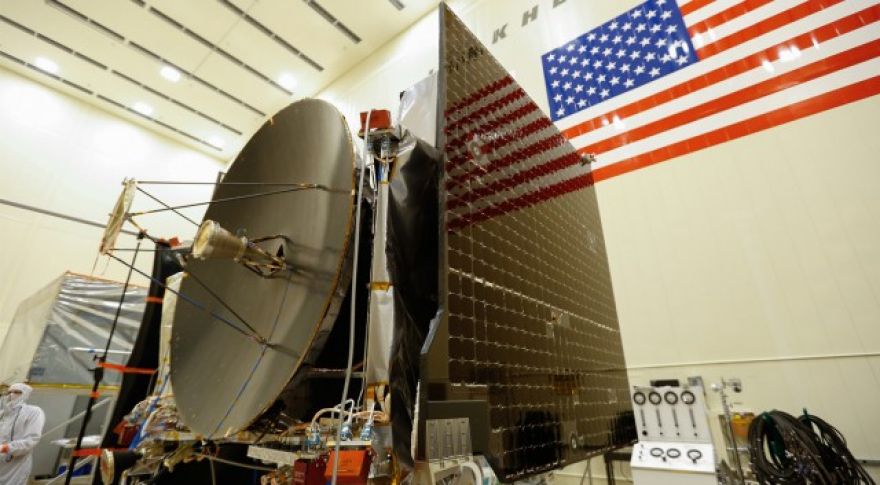
OSIRIS-REx is about to go collect (and return) samples from an asteroid
Sometimes, it’s the big missions that are the most impressive — your moon landings and your ISS construction projects. But these days, the big space projects that define the push toward a future in space tend to be iterative. They work step by step toward the day when we can assemble them all into the next great super-project, most likely a crewed trip to Mars. Until then, it’s not new versions of the space shuttle or interplanetary communications arrays that most embody the raw, almost foolhardy ambition of rocket science — it’s the incredibly lofty side-projects that generally get far less attention.
One such mission, called OSIRIS-REx, is currently preparing for launch. If it’s successful, it could end up being one of the most impressive missions ever completed in space.
OSIRIS-REx stands for the Origins, Spectral Interpretation, Resource Identification, Security, Regolith Explorer, and as the name (sort of) implies, it’s designed to reach an asteroid, take some rocks and dust as samples, then return to Earth so scientists can shoot those samples with lasers. This attempt is coming after the ESA has just setting down on a comet, but this NASA project has a different strategy: avoid the difficulty of landing by sailing to within mere meters of the asteroid, matching its speed and trajectory, and reaching out with a semi-flexible vacuum arm to sucking up samples.
Once successful, pushing away and back toward Earth should be a simple matter by the standards of billion-dollar space projects. The “sample return pod” will be relatively small wonder of modern engineering, but at the end of the day it’s just a little spaceship for rocks. It’s the dynamics of actually filling that sample return pod that pose the real challenge.
The two most difficult parts of the OSIRIS-REx plan are flying in near-perfect formation with an asteroid, and removing samples from that asteroid. Formation flying has to be extremely accurate so it can reach out and grab the asteroid without having its arm ripped off. One contact is made, it has to figure out how to pick up rocks and dust in a vacuum with very little gravity keeping everything from flying away from the grabber. Below is a video of the sample collection arm at work in the lab, kicking up simulated asteroid stuff then quickly pulling it into small internal compartments for storage.
But beyond proving that we can do it, what’s the point? Obviously, scientists will learn a whole lot about the nature and history of this particular asteroid, and likely asteroids on average. But as with most evidence in modern astronomy, they have multiple different plans for how to use it. Astroids have long been proposed as astronomical time capsules that can be used to look far into the solar system’s past. Asteroids tend not to be too badly damaged by the erosion-like processes that erase evidence throughout the universe — things like, well, asteroid impacts. As a result, there’s great hope that the samples returned could offer insight into how the solar system developed.
Philae didn’t quite achieve this perfect, illustrated landing.
Further, this will be the first time that scientists have gotten their hands on asteroid space dust — regolith. Right now, the reflectivity of that regolith is a basis for a whole lot of information about asteroids, and now that reflectivity and other physical properties can be tested directly. Such studies could greatly increase the potential accuracy of such readings. Scientists once got the chance to test regolith from the Moon, and the studies they performed on it.
But this NASA team isn’t thinking short-term; assuming OSIRIS-REx does successfully grab the samples its sent to gather, they want to create OSIRIS-REx II, a two-part sequel mission that would return samples from the surfaces of two moons of Mars, Phobos and Deimos. These sorts of sample return missions are the best scientists can possibly hope for, until they can actually send astronauts to their various planets and asteroids of interest.
OSIRIS-REx recently started its journey to the launch facility, scheduled to launch in early September.